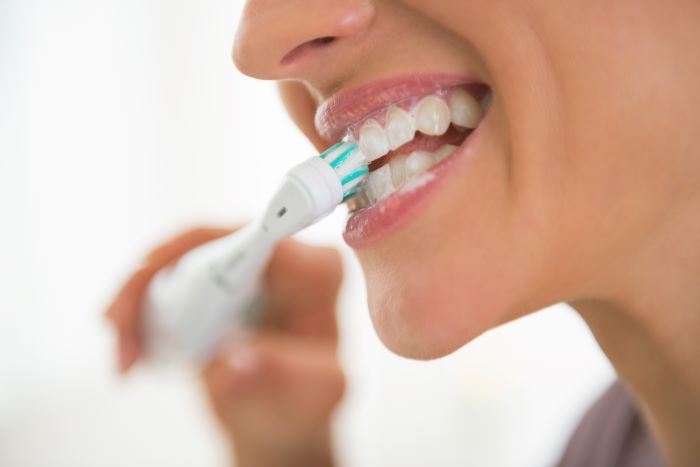Which Toothpaste is Right For You?

The toothpaste aisle can be intimidating even for the most dental-savvy among us. No matter how many choices are available for toothpastes, it can all be boiled down to which active ingredient will take care of your concern. To put it simply, an active ingredient in toothpaste is the one in the formula that actually has an effect on your teeth. The active ingredient is listed separately from the other ingredients on the back of a toothpaste box and is easy to spot. To help you choose the right toothpaste, we’ve narrowed down your choices by what concerns you may have:
If You Want Whiter Teeth
How to get whiter teeth is a question we receive often as dental professionals, and the good news is whitening toothpaste can make a difference. There are different types of tooth stains: extrinsic and intrinsic. Intrinsic stains come from inside the teeth and are associated with aging, long term use of antibiotics, or other factors. Whitening toothpaste cannot help intrinsic stain, and must be addressed in partnership with a dentist. Extrinsic stains are on the outside surface of the teeth: think the staining that comes from coffee, wine, or smoking. Extrinsic stains can be helped with whitening toothpaste and proper brushing and flossing, and removed completely with a dental cleaning.
Active Ingredient or Key Words to look for: Whitening toothpastes contain active ingredients that are abrasives as well as bleaching agents. The abrasives actually physically remove the stain from the teeth, and many toothpastes use baking soda for extra stain removal. The bleaching agents act by penetrating the enamel to lighten it. Look for the keywords “Peroxide”, Hydrogen Peroxide, or Carbamide Peroxide for whitening, along with fluoride as an active ingredient to protect the teeth.
If You Have Gingivitis
Gingivitis is caused by bacteria on tooth surfaces that cause inflammation in the soft tissue around it. In other words, plaque and tartar buildup on the teeth cause gum disease. The best way to prevent or help gingivitis at home is by proper tooth brushing and flossing, as the plaque can only be fully taken care of by mechanically removing it. Abrasive agents in toothpastes will do the job, as well as some antimicrobial agents.
Active Ingredient or Key Words to look for: Stannous fluoride is a great ingredient that protects the enamel as well as helps prevent and help gum disease. Some other ingredients that can help reduce build up on the teeth are zinc citrate and pyrophosphates. Key words to look for on the toothpaste box often use words like “total” or “complete” care, “anti-plaque”, or mention improved gum health.
If You Have Cavities
If you often get cavities, fluoride is your toothpaste bestie. Along with proper brushing and flossing to remove cavity-causing bacteria, a fluoridated toothpaste is your best option to fight cavities.
Active Ingredient or Key Words to look for: There are several different forms of fluoride on the market. You can look for stannous fluoride, sodium fluoride, or sodium monofluorophosphate as active ingredients. Xylitol can help in the battle against cavities, although it is no replacement for fluoride. Key words to look for: stay away from fluoride-free formulas, and look for toothpaste boxes that say “anti-cavity”, or “total/complete” (or something along those lines) care. The most important factor in preventing cavities at home besides proper brushing and flossing is the use of fluoride.
If You Have Sensitivity
Tooth sensitivity can greatly affect daily life, but the good news is that regular use of an anti-sensitivity toothpaste can make a difference (although it takes consistent use over time to see results).
Active Ingredient or Key Words to look for: There are two active ingredients used in anti-sensitivity toothpaste, although they each prevent sensitivity in completely different ways. The first is stannous fluoride, which works more quickly by coating the teeth, forming a barrier to stop the tooth from being exposed to painful stimuli (like a cold drink of water). The second is potassium nitrate, which takes longer to act but actually works on desensitizing the nerve of the tooth. Look for key words on toothpaste boxes like “sensitive”, or “sensitivity relief”.
A healthy smile is just a call away. At Spokane Dental we can address all of your dental concerns, so don’t delay and contact us today!


Please login to publish a comment.
Comments (0)